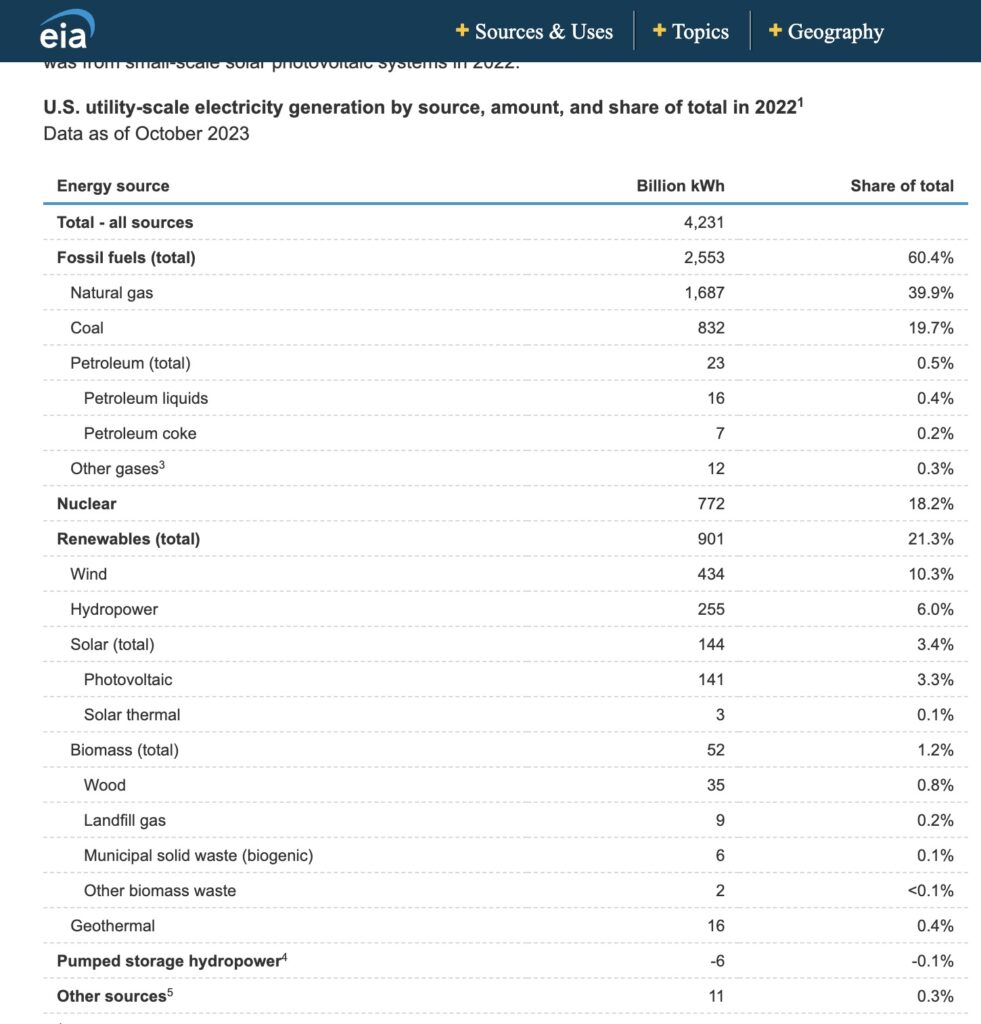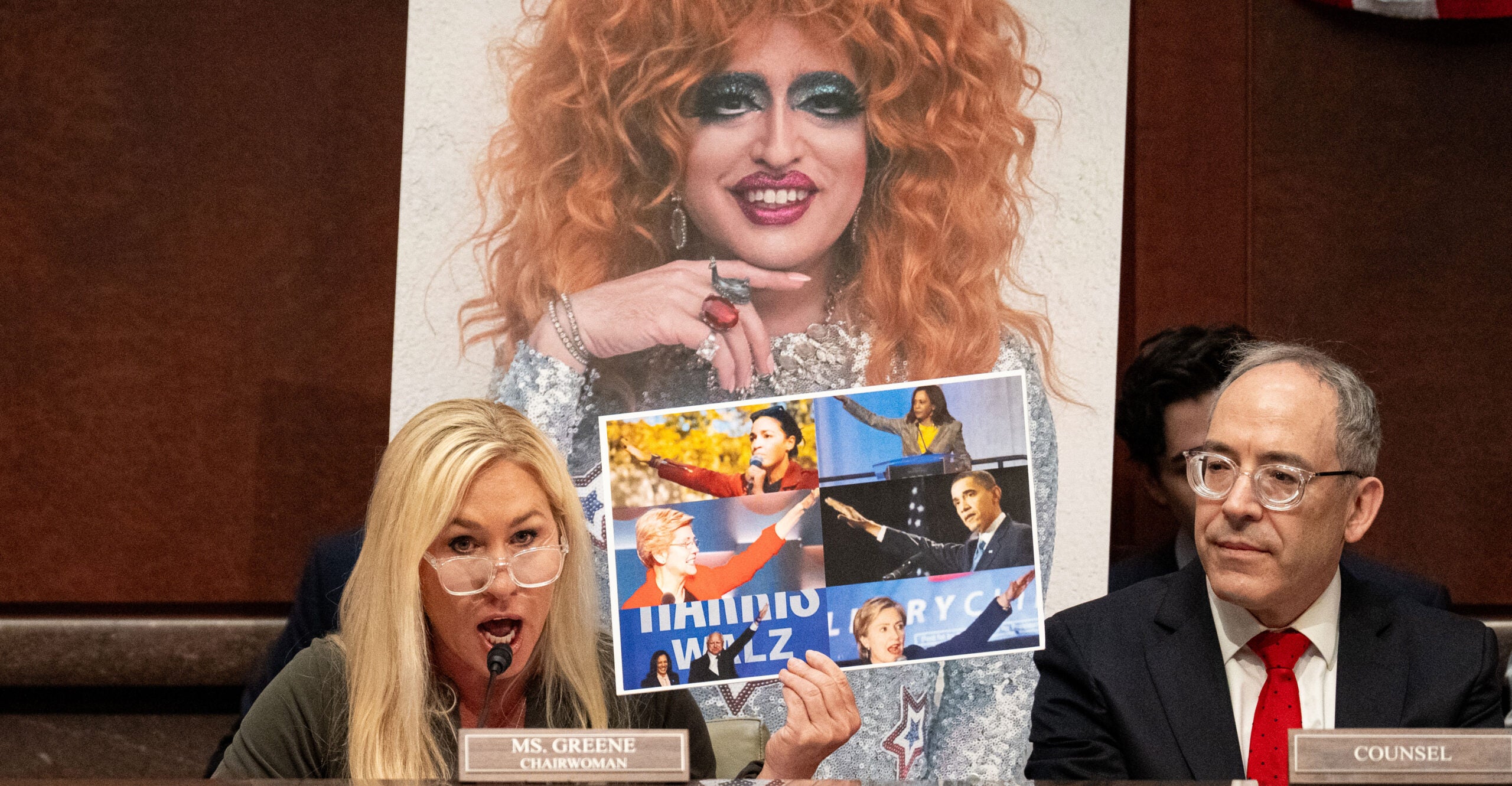CLIMATE DYSTOPIA: How Life Would Get Worse If Climate Alarmists Carry Out Their US Agenda
The global climate is always changing, but contrary to the popular narrative, the science on the exact causes is far from settled. Alarmists claim that... Read More The post CLIMATE DYSTOPIA: How Life Would Get Worse If Climate Alarmists Carry Out Their US Agenda appeared first on The Daily Signal.

The global climate is always changing, but contrary to the popular narrative, the science on the exact causes is far from settled. Alarmists claim that humans burning fossil fuels for energy will catastrophically ruin the climate, and they demand a “net-zero” future to save the world.
What would happen if the climate alarmists actually succeeded in the United States?
Although it is impossible to predict the future, early warning signs from President Joe Biden’s policies don’t paint a pretty picture.
Decreased Individual Mobility
First, if the federal government bans gas-powered cars, individual transportation would get less reliable and more expensive.
Americans prefer gas-powered cars over the electric cars favored by climate alarmists. In November, a coalition of nearly 4,000 auto dealers sent a letter to Biden explaining that his plan to force Americans to buy electric vehicles won’t work.
The auto dealers warned that “the supply of unsold [battery electric vehicles] is surging, as they are not selling nearly as fast as they are arriving at our dealerships—even with deep price cuts, manufacturer incentives, and generous government incentives.”
Despite subsidies to encourage manufacturers to make electric vehicles and tax credits for drivers to buy the cars, only 7% of new vehicle sales are electric, compared with Biden’s goal of 60% in 2030 and 66% in 2032.
Americans have many reasons to prefer gas-powered cars, as explained by Diana Furchtgott-Roth, director of The Heritage Foundation’s Center for Energy, Climate and Environment. (The Daily Signal is Heritage’s news outlet.)
Drivers may refuel gas-powered cars in five or 10 minutes at a gas station, while recharging an electric vehicle may take 45 minutes or longer for a full charge. Most drivers of electric vehicles prefer to keep their battery above 20%, and the charging process gets longer when the battery reaches 80%.
Batteries lose range in cold weather, and electric vehicles cost more than gas-powered cars. Furthermore, not everyone has a garage at home, so charging overnight might present difficulties.
These electric cars may improve over time, but the climate alarmists push an aggressive timetable that limits the chance for a natural transition. Biden has proposed regulations that would penalize automakers for selling gas-powered cars. California, meanwhile, will require all new-vehicle sales to be electric after 2035.
If cars become less effective and more expensive, Americans may be forced to accept less mobility. Many Americans no longer may be able to afford a car, and may have to move to areas with more reliable public transit.
The suburbs would get more expensive, and Americans would have fewer options in where to live.
The 21st century may become less free for most Americans, just in terms of transportation alone.
Higher Prices for … Everything
Individual transportation may become more expensive and more difficult with government-forced transitions to electric vehicles. But if all vehicles shift to electric, that also may hobble delivery trucks, driving up costs for all sorts of goods that must make it from the manufacturing floor to the sales floor.
Whenever a transportation system becomes more expensive or less reliable, that change worsens the “last mile” problem.
In telecommunications, the “last mile” refers to the final stage of extending a cable or wire all the way to a customer’s home. Similarly, in a supply chain delivering goods to customers, the final leg often represents a rising marginal cost of getting goods from point A to point B.
A less efficient transportation system would make goods more expensive, as sellers pass on the added cost to consumers. Inflation, which already has made life more difficult for Americans in the past few years, would get even worse.
Decreased Quality
Earlier this week, a federal appeals court shot down the Biden administration’s efforts to impose energy- and water-efficiency standards on dishwashers and clothes washing machines, because “it is unclear that [the Department of Energy] has statutory authority to regulate water use” in these appliances.
Yet if the climate alarmists are successful, regulations such as this would become more commonplace, and dishwashers and clothes washers would become less effective. Americans may have to wash their dishes and clothes for longer periods of time, and they may still find food on dishes and stains on clothes after running the machines.
Increasing regulations also would make toilets, showers, and sinks less effective, as government forces a rationing of water.
Increased Electricity Costs
According to the U.S. Energy Information Administration, about 60.4% of all American electricity in 2022 came from fossil fuels. Natural gas represents the largest share, at 39.9%, and coal powers about 19.7% of the U.S. electrical grid. Nuclear power accounts for 18.2% of the grid and renewables 21.3%.
If the federal government outlaws fossil fuels, or even just coal, that would prove a tremendous hit to American energy production. Costs would skyrocket, leading to rolling blackouts or electricity rationing. California has gotten a taste for this dystopian nightmare with its rolling blackouts.

The Green Upper Class
As everyday Americans suffer, those who invest in “green technologies” would receive more government largesse to solve a problem that arguably does not even exist.
As the government bans other sources of electricity, Americans would have no choice but to buy “green” options, and the government likely would incentivize wind and solar energy, as it has in the past.
In 2009, President Barack Obama notoriously oversaw the Energy Department’s $535 million loan guarantee to the solar energy company Solyndra, which filed for bankruptcy two years later. Solyndra closed down in 2011, and other subsidized green energy companies also collapsed.
Ron Klain, chief of staff at the time to then-Vice President Joe Biden, suggested that Obama visit Solyndra in 2010. Klain, later serving as President Biden’s chief of staff, pushed Biden’s green initiatives, including a Climate Corps and a program to encourage utilities to sell carbon-free energy.
In 2021, Biden visited a South Carolina factory for the Delaware-based electric bus-maker Proterra. Last August, the company filed for bankruptcy. In June, the Department of Transportation announced nearly $1.7 billion in awards to fund 1,700 American-built buses, nearly half of which would emit zero greenhouse gasses.
Energy Secretary Jennifer Granholm held stock in Proterra, a manufacturer of electric vehicles, and once sat on that company’s board. Granholm sold her shares for $1.6 million in May 2021, shortly after Biden touted the company as president.
As government cuts away alternatives and invests in green boondoggles, green businessmen stand to benefit—while life worsens for everyone else.
Wars and Rumors of Wars
The United States remains the world’s No. 1 producer of oil, but it stands to reason that climate alarmists want to eliminate all oil production in the U.S. In the words of then-candidate Biden, “No more drilling on federal lands, no more drilling, including offshore—no ability for the oil industry to continue to drill—period.”
Yet American politicians cannot prevent other countries from drilling for oil, or from using it to power their electrical plants and automobiles.
Germany’s turn toward green energy didn’t free the country of fossil fuels, it merely made the Germans dependant on Russian oil. This emboldened Russian President Vladimir Putin and arguably contributed to his decision to invade Ukraine in 2022.
If the U.S. withdraws from its position in the global oil markets, that would inspire bad actors such as Russia, Iran, Venezuela, and others to leverage their oil production. It also could embolden them to take aggressive action, as Russia did in Ukraine and as Venezuela is threatening in Guyana.
Steve Milloy, founder and editor of junkscience.com, told The Daily Signal that the Russia-Ukraine War was “caused by green policies.”
“All the wind and solar and getting rid of fossil fuels and getting dependent on Russia just enriched Russia,” Milloy said. “All the bad actors in the world, none of them are going green.”
He noted that “slave labor in the Congo” produces many of the parts for electric vehicles.
In short, if the climate alarmists succeed in the U.S., life would get worse for most people, but green activists and investors would benefit, while the world becomes less stable. Fewer people would be able to live in the suburbs, and air conditioning and heating could be rationed in the summer and winter. Appliances wouldn’t work as well, and a green upper class would continue to entrench itself.
Americans already are getting a slight taste of this climate dystopia under Biden, but it could get much, much worse.
Have an opinion about this article? To sound off, please email letters@DailySignal.com, and we’ll consider publishing your edited remarks in our regular “We Hear You” feature. Remember to include the URL or headline of the article plus your name and town and/or state.
The post CLIMATE DYSTOPIA: How Life Would Get Worse If Climate Alarmists Carry Out Their US Agenda appeared first on The Daily Signal.



















